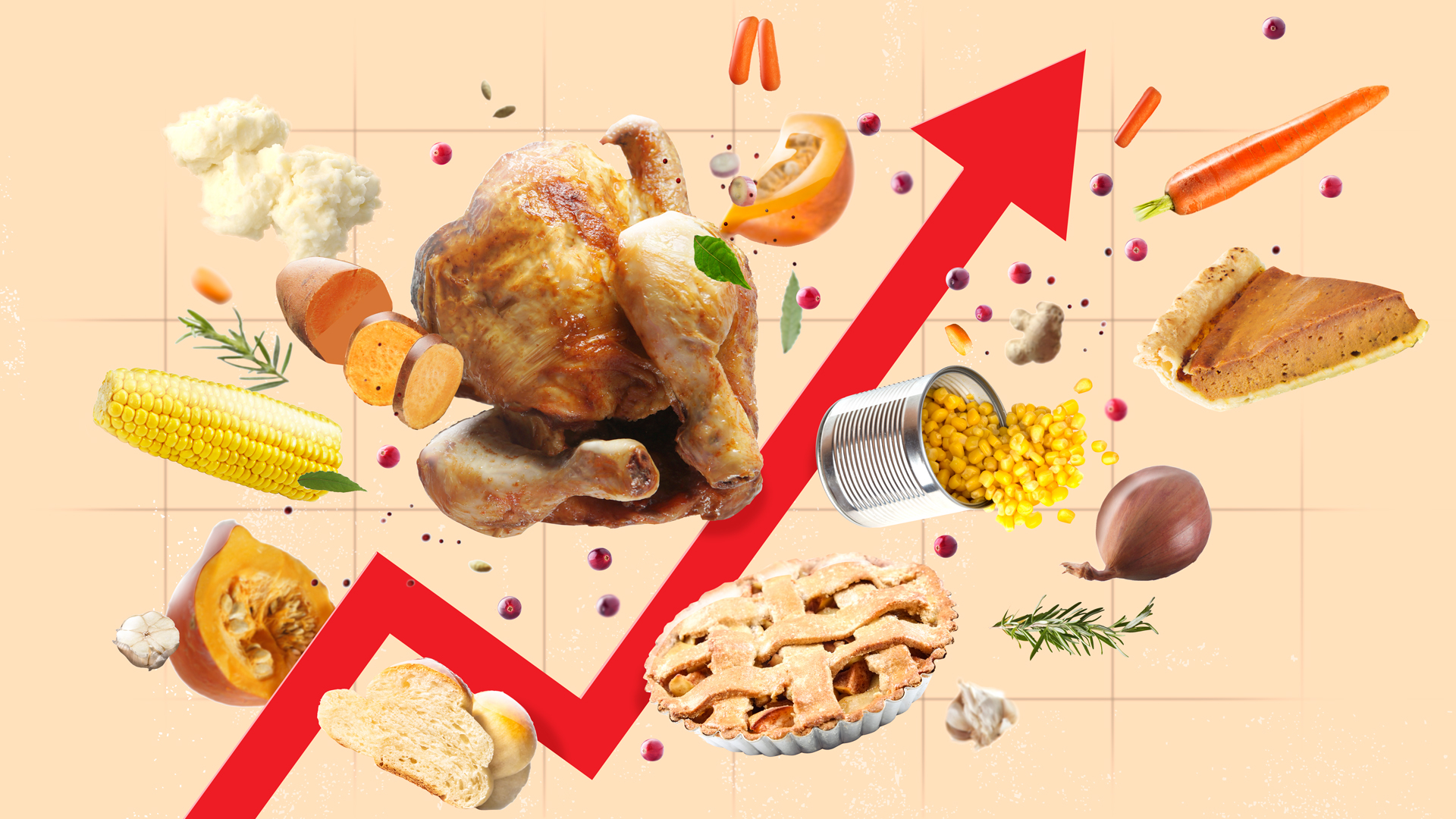
The average American’s Thanksgiving dinner is likely to increase by about 20%, according to the American Farm Bureau Federation’s annual survey—by far the biggest jump recorded in the 37-year history of the report.
The cost for a holiday feast rose to $64.05 for 10 people, up from $53.31 from last year’s average, and a nearly 37% increase in cost from two years ago. The massive jump is perhaps not surprising, given that food inflation is at a four-decade high—but it demonstrates the increasing pressure on Americans’ finances.
The Farm Bureau’s survey compares the cost of the same Thanksgiving staples each year, including a 16-lb. turkey, sweet potatoes, pumpkin pie mix, a vegetable tray, green peas, and dinner rolls.
The next largest year-over-year increase recorded by the Farm Bureau, which introduced the Thanksgiving survey in 1986, was between 1989 and 1990, when prices rose by nearly 17%. In many years, the cost decreased year-over-year.
Almost everything is more expensive
The prices of nearly everything on the Farm Bureau’s Thanksgiving shopping list increased by double-digit percentage points. The biggest jump was the 14-ounce bag of cubed stuffing, which spiked 69%. Turkey was up 21%, whipping cream up 25%, milk up 16%.
The only item that decreased in price was a 12-ounce bag of cranberries, which went down 14%.
The increased price has much to do with food price inflation, which has grown this year at levels not seen in since 1979, despite slowing slightly in October. The Consumer Price Index was up 10.9% in October, compared to the previous 12 months. Food at home—i.e. not restaurant food—was up 12.4%.
“General inflation slashing the purchasing power of consumers is a significant factor contributing to the increase in average cost of this year’s Thanksgiving dinner,” said Farm Bureau Chief Economist Roger Cryan.
This year, supply chain issues, the war in Ukraine, and general increased fuel costs have impacted the food industry’s ability to meet demand.
A rising need for food assistance
Food banks are feeling the brunt of these costs as more people come to them in need.
More than 53 million people relied on charitable food assistance last year, according to Feeding America, and 60% of food banks in their network reported an increase in demand for emergency food assistance in August compared to the previous month.
“The need is twofold,” says Carlos Rodriguez, President and CEO of the Community Food Bank of New Jersey (CFBNJ). “It means more people showing up at local pantries are looking for food in a way that we haven’t even seen since the height of the pandemic.”
At the Community Food Bank of New Jersey, need has increased 40% in the last year, and the agency is providing nearly 1 million more meals per month than it did during the height of the pandemic, Rodriguez tells TIME.
Shirley Schofield, CEO of the Food Bank of North Alabama, says a recent survey conducted by her food bank found about 70% of people who come to the food bank have a full-time job. Many survey respondents also listed transportation costs as a big hurdle to getting the food they need, with the consumer price index for gas increasing by 17.5%.
Despite record low unemployment rates, many families are still struggling to recover from being unemployed or underemployed. “They’re climbing out of that kind of economic reality the pandemic caused… but now inflation makes the climb into some kind of economic stability much harder,” Rodriguez says.
Food banks are also being squeezed because their costs for procuring food are also increasing rapidly. And supply chain disruptions from the past year have decreased the amount of support food banks typically receive from the U.S. Department of Agriculture (USDA). Instead, many food banks have taken on the costs themselves, further straining their budgets during a time of need.
“There’s a lot of conversations and worry about how long we can sustain having to pay to get the things that we need to serve the communities that we’re trying to help,” Schofield says.
But there’s hope that things will change in the coming year. In September, the USDA announced $1 billion in grants for food banks and other emergency food producers, which Schofield says would be a huge help.
And some experts believe global food costs will ease down in the following year due to solid farming margins that have allowed for acreage expansion and crop investment, which will help with food supply.
“While we recognize investor concerns that food prices may escalate further, we believe the market is underappreciating the factors that will cause future food price increases to moderate,” said Morgan Stanley Equity Analyst Roberto Browne in a research report.
More Must-Reads From TIME
- The 100 Most Influential People of 2024
- The Revolution of Yulia Navalnaya
- 6 Compliments That Land Every Time
- What's the Deal With the Bitcoin Halving?
- If You're Dating Right Now , You're Brave: Column
- The AI That Could Heal a Divided Internet
- Fallout Is a Brilliant Model for the Future of Video Game Adaptations
- Want Weekly Recs on What to Watch, Read, and More? Sign Up for Worth Your Time
Contact us at letters@time.com